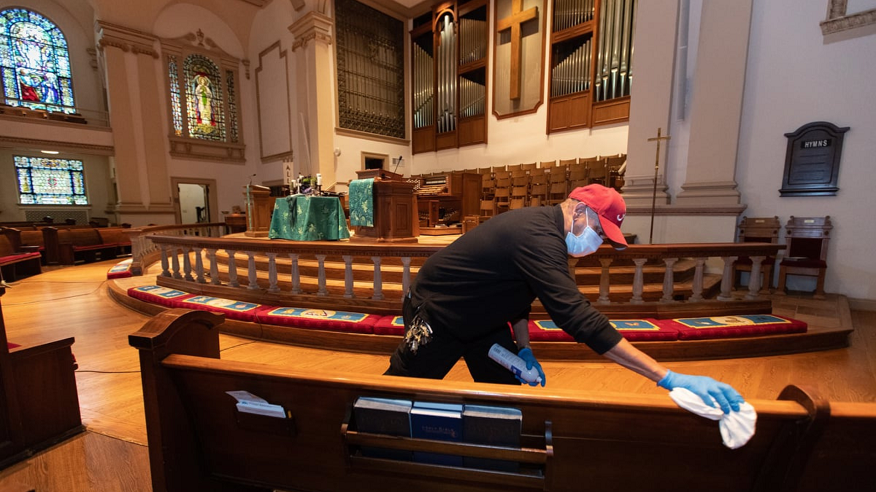A church serves not only as a spiritual haven but also as a communal space that brings people together. Keeping this sacred space clean is not only a matter of hygiene but an expression of respect and care for the congregants and the divine surroundings. In this exploration, we uncover practical tips on maintaining the cleanliness of a church, with a nod to the assistance of cleaning services in Cleveland.
Embracing the Sacred Duty
Fostering a Sense of Community:
- Shared Responsibility: Communicate that maintaining church cleanliness is a collective effort involving the entire congregation.
- Volunteer Programs: Establish volunteer programs for congregants to actively contribute to the upkeep of the church.
Instilling Pride in the Space:
- Educational Initiatives: Conduct programs to educate the congregation on the significance of a clean and welcoming church.
- Celebrating Achievements: Acknowledge and celebrate collective achievements in maintaining a pristine church environment.
Creating a Cleaning Schedule
Regular Cleaning Routines:
- Weekly Cleaning Tasks: Establish a weekly cleaning schedule covering tasks such as dusting, vacuuming, and surface cleaning.
- Monthly Deep Cleaning: Plan for monthly deep cleaning sessions to address areas that may be overlooked during regular routines.
Rotating Responsibilities:
- Assigned Cleaning Teams: Assign different teams for specific cleaning duties on a rotating basis.
- Promoting Teamwork: Encourage collaboration among congregants by having them work together during cleaning sessions.
Engaging Professional Cleaning Services in Cleveland
Seeking Professional Assistance:
- Deep Cleaning Services: Periodically engage professional cleaning services in Cleveland for thorough and specialized cleaning.
- Consulting Experts: Seek advice from cleaning professionals on the specific needs and challenges of maintaining a church environment.
Customized Cleaning Plans:
- Tailoring Services: Work with cleaning services to tailor cleaning plans based on the unique features of the church.
- Flexible Scheduling: Ensure that cleaning services can accommodate the church’s schedule, including special events and services.
Preserving Sacred Spaces
Caring for Furnishings:
- Regular Inspection: Conduct regular checks on pews, altars, and other furnishings for damage or wear.
- Gentle Cleaning Methods: Use mild cleaning agents and gentle methods to clean delicate religious artifacts and surfaces.
Protecting Sacred Texts:
- Proper Storage: Store sacred texts in a designated area with controlled temperature and humidity to prevent deterioration.
- Gentle Handling: When cleaning areas containing religious texts, ensure a delicate and respectful approach.
Addressing Special Spaces
Sanctuary Cleaning:
- Attention to Altars: Devote special care to the cleaning of altars and religious symbols in the sanctuary.
- Floor and Seating Areas: Regularly vacuum and clean floors, ensuring comfortable and pristine seating for congregants.
Fellowship Hall Maintenance:
- Kitchen and Dining Areas: Keep fellowship hall kitchens and dining areas clean and well-organized for community events.
- Floor and Table Care: Regularly mop floors and clean tables after gatherings to maintain a welcoming atmosphere.
Green Cleaning Initiatives
Environmentally Friendly Practices:
- Eco-Friendly Cleaning Products: Adopt environmentally friendly cleaning products to minimize the church’s ecological footprint.
- Waste Management: Implement recycling programs and proper waste disposal to contribute to sustainable practices.
Educating Congregants:
- Workshops on Green Practices: Organize workshops to educate congregants on the importance of environmentally conscious cleaning.
- Encouraging Green Habits: Foster a culture of sustainability by encouraging congregants to adopt green cleaning practices at home.
Safety and Hygiene Measures
Health and Safety Protocols:
- Hand Sanitizing Stations: Install hand sanitizing stations at entrances for congregants’ health and safety.
- Regular Disinfection: Periodically disinfect high-touch areas to minimize the spread of germs.
Emergency Preparedness:
- Emergency Cleaning Kits: Keep emergency cleaning kits on hand for immediate response to spills or accidents.
- Evacuation Plans: Establish evacuation plans that include guidelines for maintaining cleanliness during emergency situations.
Communication and Transparency
Open Lines of Communication:
- Feedback Mechanisms: Establish channels for congregants to provide feedback on the church’s cleanliness.
- Transparent Cleaning Policies: Communicate openly about cleaning schedules, processes, and the involvement of professional services.
Inclusive Decision-Making:
- Committee Involvement: Form a cleaning committee that includes representatives from various demographics within the congregation.
- Inclusive Decision-Making: Involve congregants in decisions related to cleaning initiatives, fostering a sense of ownership.
Continuous Improvement and Adaptability
Regular Evaluations:
- Feedback Reviews: Regularly review feedback from congregants to identify areas for improvement.
- Adapting Cleaning Plans: Modify cleaning plans based on the evolving needs and feedback received over time.
Embracing Technological Advances:
- Smart Cleaning Solutions: Explore the integration of smart cleaning solutions for efficient and data-driven approaches.
- Digital Communication: Utilize digital platforms for communication on cleaning schedules, updates, and initiatives.
Conclusion
In the sacred spaces of a church, cleanliness is not merely a practical necessity but a profound expression of reverence and community responsibility. By implementing these tips and considering the support of professional cleaning services in Cleveland, a church can ensure that its physical environment mirrors the spiritual harmony sought by its congregants. It is a shared journey where the commitment to cleanliness becomes a sacred duty, fostering an atmosphere where all feel welcomed, embraced, and spiritually uplifted.

